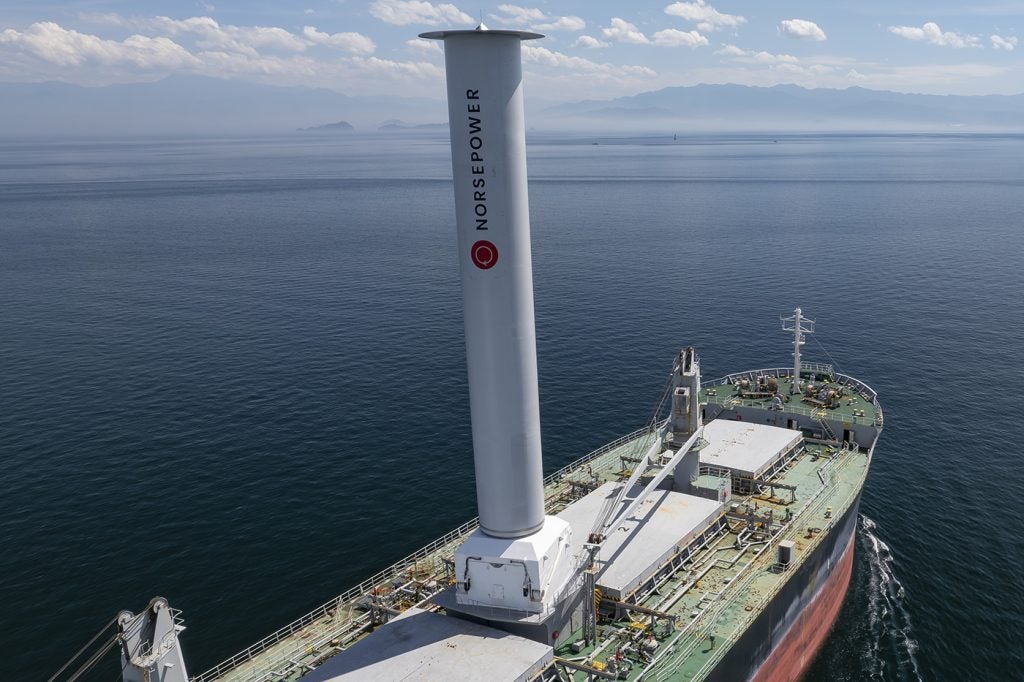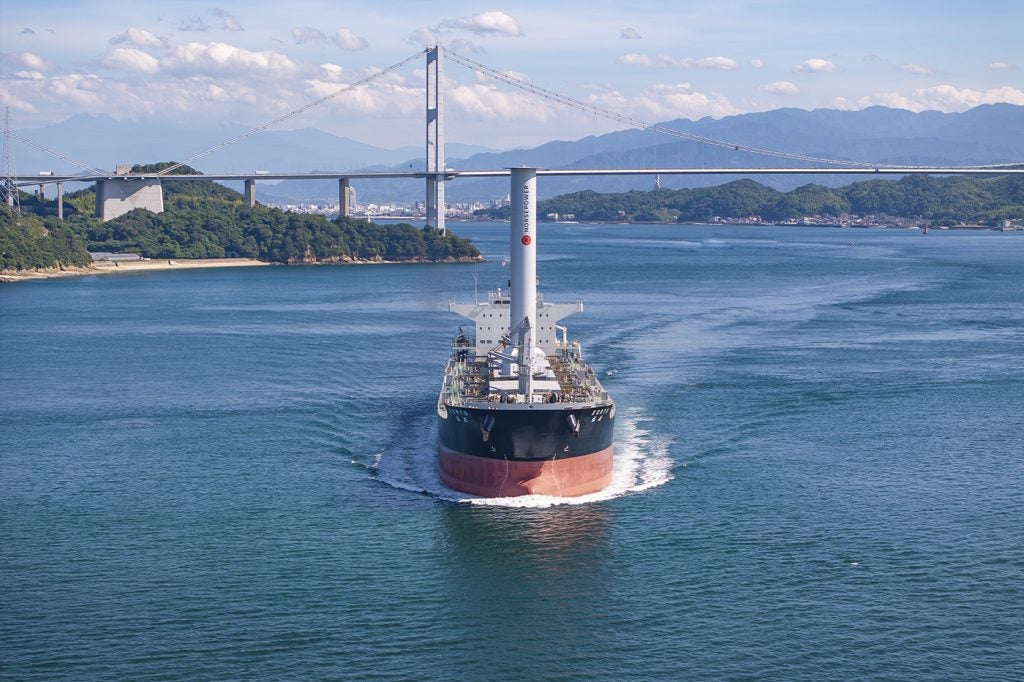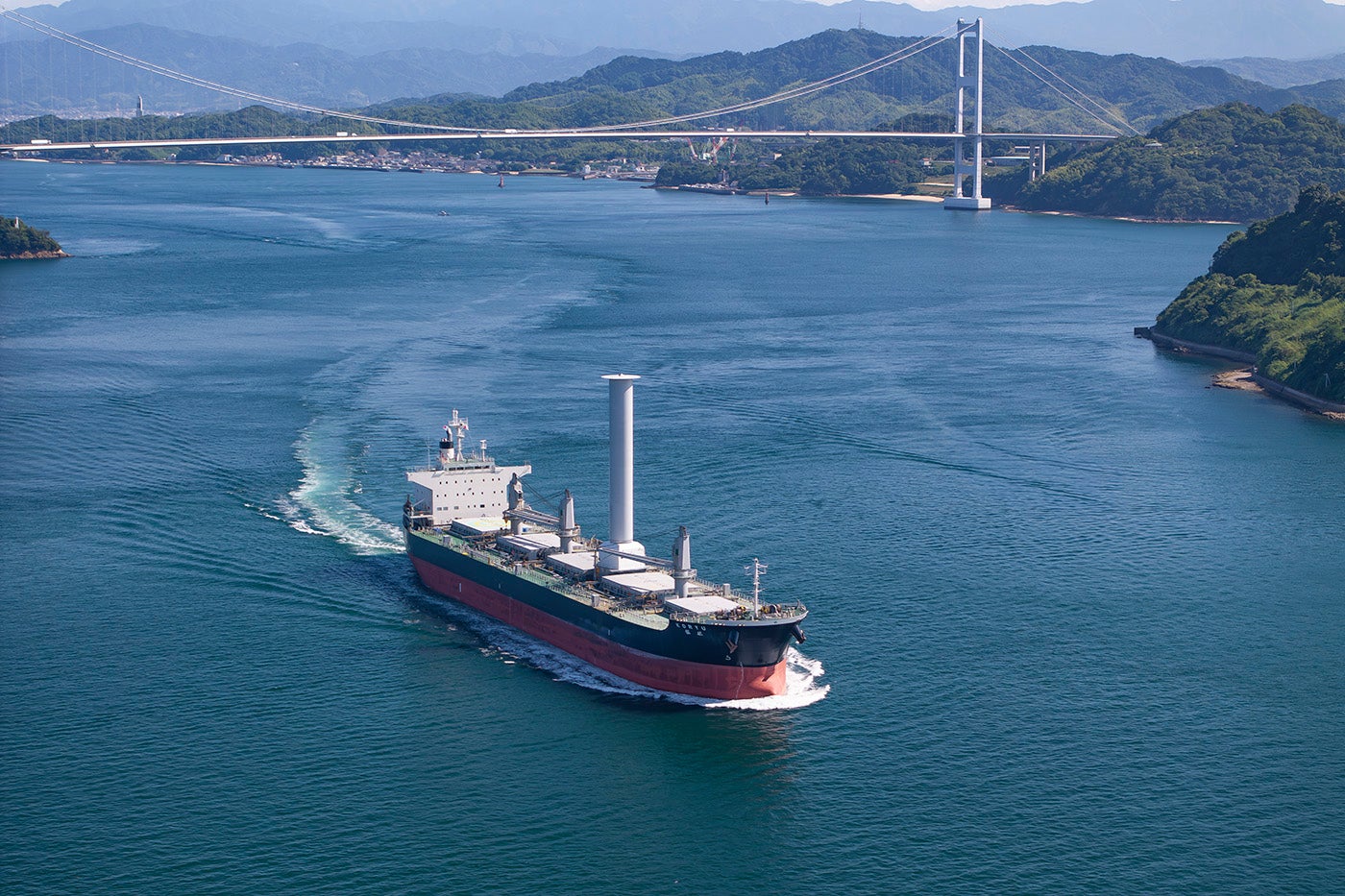Despite the urgent need to meet regulatory deadlines and the growing demand from cargo owners for sustainable supply chains, the sector is still grappling with the challenge of identifying definitive alternative fuel solutions as it continues to push on with its decarbonisation goals.
Maersk’s recent pivot from methanol to LNG underscores the fact that the industry has yet to settle on a clear path forward. In this environment of uncertainty, shipping companies need immediate, reliable solutions that provide results now and offer long-term benefits.

Wind-assisted propulsion systems (WAPS) like the Norsepower Rotor Sail™ (NPRS) are emerging as a critical component in the industry’s decarbonisation toolkit. These systems offer a practical way to reduce dependency on alternative fuels, enhance energy efficiency, and comply with increasingly stringent environmental regulations.
Rotor sails: the bigger picture
When demand for alternative marine fuels eventually rises, shipping will face stiff competition from other industries, such as steel and agriculture. These sectors are already proactively positioning themselves to secure a significant share.
The Maritime Forecast to 2050 by DNV predicts that shipping will require 30%-40% of the estimated global supply of low-carbon alternative fuels by 2030. To secure the necessary volumes – estimated at over 500 million tonnes by 2040 – shipping must aggregate demand and present a united front.
This is where wind propulsion can play a pivotal role, presenting the industry with the opportunity to reduce the sector’s reliance on alternative fuels and provide a stable, efficient energy source that does not require extensive infrastructure development.

US Tariffs are shifting - will you react or anticipate?
Don’t let policy changes catch you off guard. Stay proactive with real-time data and expert analysis.
By GlobalDataThe potential efficiency gains using WAPS like the NPRS presents not just a technical and operational advantage, but also a commercial imperative. Pricing projections earlier this year by the Global Maritime Forum (GMF) and the Rocky Mountain Institute estimated that by 2030, the cost of green ammonia could range between $900-$2,700 per tonne (VLSFO-equivalent), while methanol could cost between $900-$2,500 per tonne.

With the stakes this high, reducing fuel consumption by even 5%-25% can make a tangible difference for the bottom lines of many ship owners and operators. The economic rationale for adopting a rotor sail solution and other fuel efficiency innovations is further strengthened by the shorter payback periods as the cost of alternative fuels rises. Together with proven performance data and growing investor confidence, the adoption of wind propulsion technologies is gaining momentum.
For example, recent reports from Lloyd’s Register note that the number of WAPS installations is expected to accelerate rapidly, particularly in the bulk and tanker vessel segments. Nearly 14,000 vessels were identified as candidates for WAPS adoption over the next 26 years, highlighting the vast market potential for these technologies. Installations of the NPRS alone will double within the next 15 months.
The regulatory landscape is also evolving rapidly, with new measures such as the European Union’s Emissions Trading System (ETS) and the upcoming FuelEU Maritime regulation introducing a mix of incentives and penalties. Shipping companies will soon be required to purchase EU Allowances (EUA) to cover their greenhouse gas emissions, with costs potentially reaching $8bn by 2026.
However, the FuelEU Maritime regulation, which comes into effect in 2025, offers specific rewards for vessels equipped with wind propulsion systems. Ships that derive 15% or more of their propulsion energy from wind will benefit from a 5% reduction in their GHG intensity calculation – a perk unmatched by any other energy efficiency technology.
Sailing to 2050
On the road to 2050, wind propulsion offers a tangible, immediate solution that is helping put the wind behind the sails of the industry’s decarbonisation goals. By harnessing the power of the wind, shipping companies can reduce their reliance on alternative fuels, cut emissions, and navigate the complexities of the modern regulatory landscape with greater ease
Quantifying its exact impact, a study with NAPA and Sumitomo Heavy Industries demonstrated that combining voyage optimisation and the Norsepower Rotor Sail cuts emissions by up to 28% on average on the North Atlantic route.
Such energy efficiency strategies not only present tangible savings but also help improve operators’ access to finance, commercial competitiveness, and profitability on an annual basis. They also maintain a fully regulatory-compliant vessel that retains its asset value.

Industry leaders like TotalEnergies, MOL, Vale, Louis Dreyfus Armateurs, Oldendorff Carriers, and IINO Lines – among others – are already tapping into these savings by opting for wind propulsion solutions such as rotor sails.
The potential market for rotor sails is vast. With over 30,000 vessels globally that can benefit, it’s a bold but realistic ambition to bring sails back to shipping. With each installation and spin of our NPRS, we’re helping the industry save fuel and the planet.
The time to act is now, especially as the winds are all blowing in the right direction.




